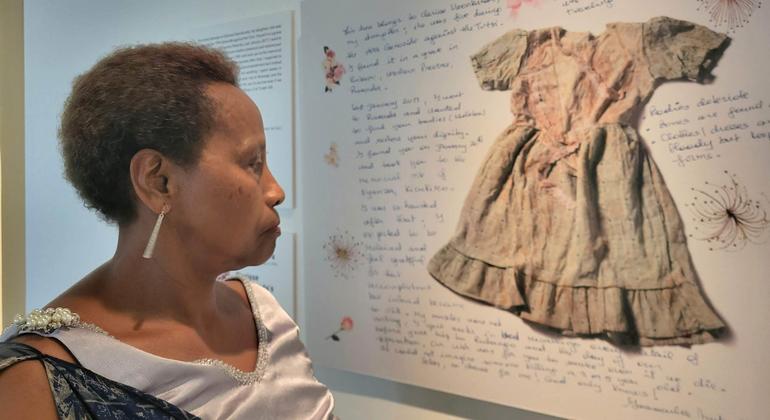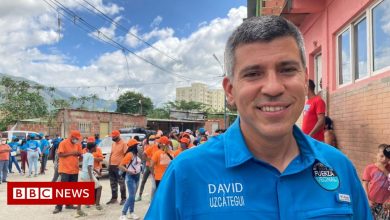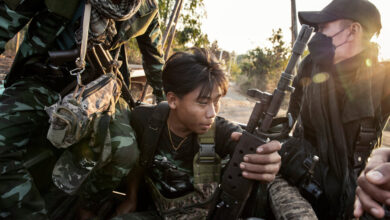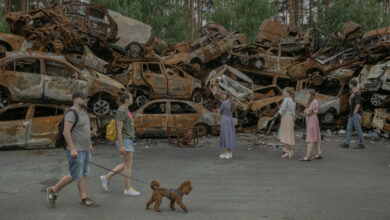First Person: Preserving the Memory of the Rwandan Genocide Victims

Toddler dresses, five year old skirts and sweaters. Washed clean, but still stained with blood.
These are personal items that Immaculée Songa donated for “Stories of Survival and Remembrance – A Call to Action to Stop Genocide,” which is currently on display at United Nations Headquarters. , along with a photo album, showing daughters Raissa and Clarisse smiling and having fun. smile.
“The artifacts in this exhibition are very important to me, because they remind us of the lives and experiences of the deceased who are no longer here. Talk about them and tell their stories. It’s up to us how their lives have been taken.
Six years ago, I returned to Rwanda to find the remains of my family. In a mass grave, I recognize the dresses my daughters wore at the last moment of their lives. Clothes stick to their bodies. They are all I have left of my children. So I took them.
I first displayed my daughter’s clothes at the Illinois Holocaust Museum in the United States, to tell their stories. Even though they were washed, you can see the blood stains and you can imagine how they died.
Don’t let my daughter be forgotten
We talk about millions of Rwandans, Tutsi killed in the genocide, and we seem to forget about individuals. This exhibition is here for us to remember the history of each individual.
If I could talk to my daughters, I’d tell them I haven’t forgotten them, I love them so much and I’ve talked about them a lot, because they suffered a brutal death that they don’t deserve it.
I am a mother who does not die, a woman who has cried a lot. I told myself that God had saved me for a reason, to give me strength to speak about my daughters and to make sure they weren’t forgotten.

The clothes of Immaculée Songa’s two daughters, Clarisse and Raissa, are on display at the United Nations exhibition “Stories of Survival and Remembrance – A Call to Action Against Genocide”
Truth does not lie
We have a responsibility to tell the world that injustice exists, that people are dying because of injustice, and that the genocide in Rwanda was planned and carried out by very smart people who recruited warriors and persuaded them to kill. The responsibility to prevent genocide rests with governments, those in positions of influence, and the United Nations.
On our side, we also play our part. For example, we organize anniversaries and education to explain to the public what can happen if people are not careful. Because genocide can be prevented.
There are several stages of genocide, and the final stage is denial. Today, around the world, people are denying genocide. They were given the background, they wrote books and said that the genocide didn’t happen.
The truth doesn’t lie. So if people see the truth, when they see my baby’s clothes, there’s nothing wrong with that. People said children were killed, and now they see that to be true.
To ensure that genocide is not repeated, we must involve everyone. We have to go to school, and teach about peace. When I talk to students, I can see them change. It makes a difference.
Before the genocide, 95% of the population was uneducated, and it was easy to convince them to kill. I think, if people had access to the education they need, they would support peace.”

The exhibition “Stories of Survival and Memory – A Call to Action Against Genocide” opens at the United Nations Headquarters in New York.
“Stories of survival and flashbacks – A Call to Action Against Genocide”, on display at United Nations Headquarters until June 15.
The objects in the exhibition – clothes, toys, photographs, letters, recipes and other seemingly ordinary objects – survived the Holocaust, genocide and other atrocities in Cambodia, Srebrenica (Bosnia Herzegovina) and Rwanda.
The exhibition is being held in the year of the 75th anniversary of adoption Universal Declaration of the Rights of Man and the Convention on the Prevention and Punishment of the Crime of Genocide.
It was inaugurated a few days before the celebration of the International Day of Reflection on the 1994 Tutsis Genocide in Rwanda, in the Great Hall of the United Nations General Assembly on Friday, April 14.




